Harry Potter and the Half-Blood Prince in Vietnamese was already in Hanoi's bookshops in October. This, together with the bright autumn sunshine and the sweet apples from the hill-station of Sapa, confirmed for me that Vietnam is no longer an isolated Marxist state and former war-zone, but is again what it long was under French rule, one of the most charming destinations in all Southeast Asia.
People who are fond of Vietnam often debate the relative merits of Ho Chi Minh City (Saigon) and Hanoi. My first experience of the country was of Saigon, and I instantly fell in love with it. On a recent trip to the north I found Hanoi's charms simultaneously more obvious and slower to make a deep impression. Saigon was the lush southern bloom, I decided, Hanoi the shy northern blossom.
Hanoi is a lot smaller than Saigon. Ostentatious colonial buildings proliferate, but they don't constitute the essence of the city's attraction. Instead, Hanoi is characterized by its lakes and its unique Old Quarter.
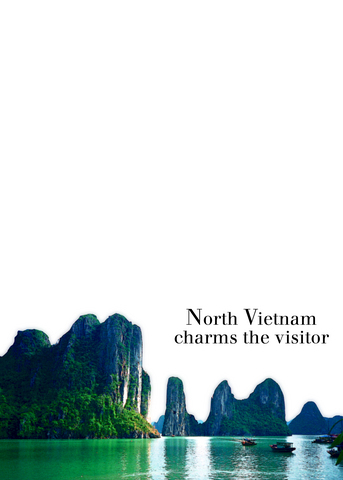
The lakes begin with the large West Lake, dominating the area many expat-riates live in, and site of the Sheraton hotel and a fine lake-side swimming-pool. Ho Hoan Kiem (Lake of the Recovered Sword) is right next to the Old Quarter. It has a picturesque island with an old temple on it, reached by a low wooden bridge and accessible during daylight hours. Trees have been encouraged to lean and dip their branches into the water and this, plus the winter mists that gather on the water's surface, has made the lake beloved of Hanoi's poets and photographers over the decades.
The Old Quarter is extraordinary. It's reminiscent of Fez or Marrakesh in Morocco, a maze of narrow streets each named after a particular trade, with traders still following that pattern. But as well as the silversmiths, bamboo-workers, tailors and the like, there are also tiny Parisian-style bistros and wine-bars, as well as small-scale hotels, that are largely unchanged from the French era.
It's one of the characteristics of Communism in its pre-reform phase that little gets altered. There was nowhere in Western Europe as quaint as Poland in the 1980s, and there are few places as fascinatingly old-fashioned in Southeast Asia today as Hanoi's Old Quarter.
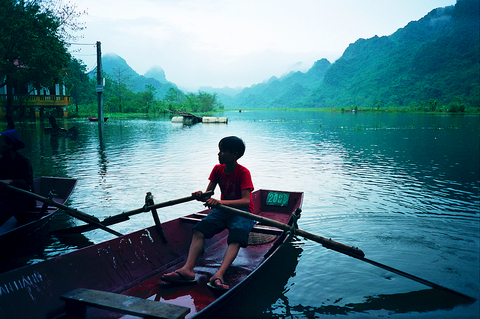
PHOTOS: BRADLEY WINTERTON
In size Hanoi is eminently user-friendly. You can walk in 15 minutes from the Old Quarter to the Opera House and adjacent Sofitel Metropole, the city's classiest hotel. Take a look inside the Metropole -- it's one of the great Asian hotels and just about everyone famous who's been to Hanoi stayed there, even though there were still rats running around as late as the early 1990s when author Justin Wintle visited.
Today, though, the Metropole is sumptuous indeed, but in a French rather than an American manner. Catherine Deneuve and the entire film crew stayed there during the making of Indochine, and Bertrand Russell made it his Hanoi home while researching his War Crimes in Vietnam, published in 1967 when he was 95. Unfortunately, many more such crimes were waiting to be committed after that date. But then, war itself is a war-crime.
The Old Quarter teems with bargain accommodation. I found the Sports Hotel (tel: 84-4-9260-154; 96 Hang Bac) clean and trustworthy at US$12 a night. I heard one story of another hotel's manager taking a guest's deposited valuables home "for safe keeping," then telling the guest he couldn't remember how much cash there had been. The Sports Hotel will certainly not present you with that problem, and you can even rent a DVD-player from them for US$2 a day.
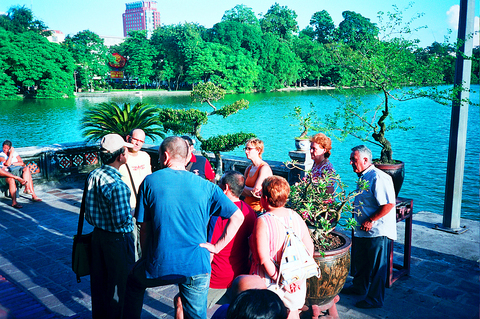
The North Hotel (tel: 84-4-8267-242; 15 Hang Ga) is friendly, with rooms for US$10. You can get as low as US$4 at the Apple Hotel (tel: 84-4-9281403; 53B Luong Ngoc Quyen), though I didn't try it.
If you want to go more up-market while remaining in the Old Quarter, hotels displaying classic-style Chinese furniture in polished wood, such as the Hong Ngoc (tel: 84-4-8267-566; 14 Luong Van Can) will charge you US$30 for an elegant room overlooking the street. The Quoc Hoa (tel: 84-4-8284-528; 10 Bat Dan) at US$50 was praised by people staying there. Both these last two add a service charge, 10 percent and 15 percent respectively. As usual, the more you pay, the more they add.
Vietnam is a food paradise, and considering the very low prices you shouldn't go there at all if you're on a diet. One of the nicest restaurants I found -- good Vietnamese food at a moderate cost in attractive old premises -- was the popular Little Hanoi (tel: 84-4-9260-168; 9 Ta Hien). Also atmospheric and good-value is the Le Trach Quan (tel: 84-4-9340604; So 2 Le Trach), crowded with what look like government officials at lunchtime.
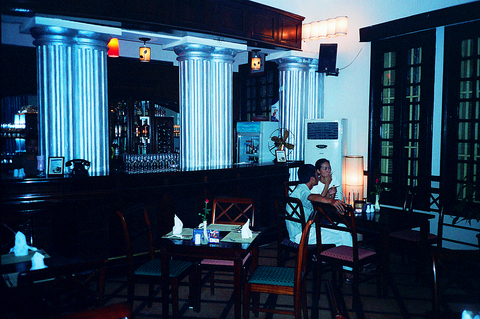
There are plenty of French-style places located in elegant old buildings near the Metropole. One such, Truong Hoa Sua (tel: 84-4-942-4448; 28A Ha Hoi), claims to act as a school for street-children but is expensive by Hanoi's unbelievably reasonable standards. Better value, I found, as well as more atmospheric, was the Tara Restaurant and Cafe (tel: 84-4-935-1068; 3A Ngo Quyen).
But innumerable Hanoi eating places share a similar allure. Exquisite old French premises, renovated to every bit of their former glory, are filled with the most unassuming clientele in flip-flops laughing over their cold beers, while old-guard government men in sandals sit drinking Russian vodka.
The decor is unimprovable, and prices are near rock-bottom. Amid such retro splendor, the aesthete is in seventh heaven.
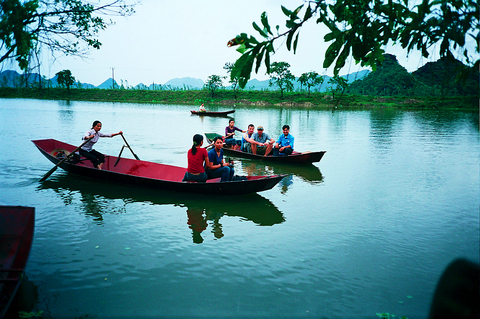
Pho (pronounced "fur") is a Vietnamese staple, a substantial bowl of noodles with some greens and the meat of you choice. The typical price for this is NT$20-30. It's often accompanied by bia hoi (pronounced "beer her-i"), an absurdly cheap low-alcohol beer selling for as little as NT$5 a half-liter.
The Opera House, though less charming than Saigon's (it's more gaudy) is also worth looking into. I went along for a program of Vietnamese songs and was instantly offered a ticket at 100,000 dong (NT$200) by a crown of vendors. When I declined, the price was halved. The performance, in the lavishly ornate, plush-seat interior, consisted of pop stars, drummers and quasi-military line-ups lauding the history of Hanoi, 995 years old that month.
Motorcycle taxis are a good way to get around town. Don't worry about finding one -- they'll find you. Tell them where you want to go and offer between 5,000 dong and 15,000 dong (NT$10 to NT$30) for the ride. They'll usually be more than willing to wait and bring you back again. Helmets are neither required nor available, but these drivers mostly go slowly with a foreigner on the pillion. If they have to park in a guarded pound it's reasonable to give them the small fee, one or two thousand dong. No one parks in Hanoi or Saigon without the vehicle being guarded -- often simply by someone standing under a tree and watching.
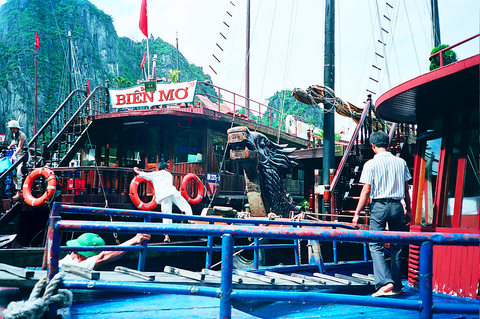
As for money, HSBC has a large new building (tel: 84-4-9333189; 23 Phan Chu) with 24-hour ATMs that take almost all credit cards, and the bank's own cash cards wherever issued. In the Old Quarter, the open-till-late Sacombank on Hang Bac gives an equally good rate of exchange (15,886 Vietnamese dong to the US dollar).
There are several possible side-trips out of Hanoi, of which Halong Bay is the most famous. People typically go there for one, two or three days. Whichever you opt for, you leave Hanoi at 7.30am (but the Sago cafe on the Old Quarter's Dinh Liet is open for breakfast from 6.45am). It's a three-and-a-half hour drive to Halong City, usually in 15-seat minibuses. For overnight stays you sleep either on one of the largish tourist boats, or on the island of Cat Ba.
The views are spectacular. Giant birds wheel overhead and there are caves to clamber through, one of the best of them only discovered 20 years ago. Dark green seas, indigo islands and skies you feel were washed down from China's nearby Guangxi province combine in painterly splendor.
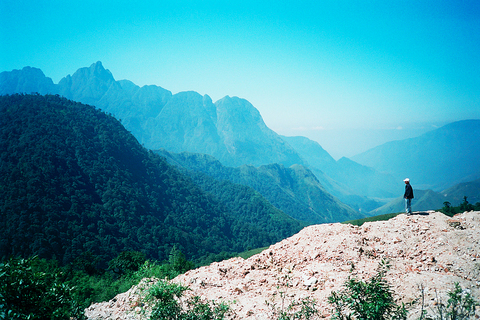
A day-trip woth taking is to the Perfumed Pagoda. After a 90-minute drive you're punted along past reeds and the occasional stilt-hut beneath pointed mountains, not very high but strangely shaped and reminiscent of China's Guilin. It's eerily beautiful. Then you clamber up a paved track to a giant cave, now a Buddhist shrine.
Sapa, at 1,600m near the Chinese border, takes longer. I got there by overnight train to Lao Cai (eight hours, NT$380 with soft sleeper), then rode up the dewy road to Sapa by motorbike in the morning. Alternatively, minibuses wait for the trains and there's no difficulty getting a seat on one for NT$60.
The most expensive hotel is the Victoria (tel: 84-20-871522) at US$135 and above, with a log fire burning in the lobby. But I found the Spring Hotel (tel and fax: 84-20-871380) at US$10 perfectly satisfactory, and with a beautiful view across to the town center on its steep hillside.
People had told me Sapa was spoilt by over-insistent minority tribespeople pestering you with ethnic products (quite possibly manufactured in factories in China). But for me it was an autumn paradise of temperate but sunny weather, immense mountains and sequestered, terraced valleys plunging to great depths. On a motorbike in two days you can see a lot.
The best seasons for visiting the north and south of Vietnam are different. The north is cool and misty in the winter months, whereas the south then enjoys positively Mediterranean weather -- blue skies, relatively low humidity, and day after day of idyllic sunshine. The best time to visit the north, by contrast, is the late summer and autumn, when the south is having its wet season.
Books to read when in Vietnam include Justin Wintle's Romancing Vietnam, written in the 1990s with the aim of re-establishing the country as a Southeast Asian society rather than a former battlefield, Michael Herr's Dispatches (on the war), Graham Greene's novel The Quiet American and Norman Lewis' hard-to-find 1950s travel classic A Dragon Apparent. The film Indochine with Catherine Deneuve is incomparable, and contains some fine views of Halong Bay.
Vietnam Airlines, EVA and China Airlines all fly from Taipei to Hanoi daily. The return fare with one month's validity on Vietnam Airlines is NT$13,000. It's possible to find a place in a nominal group, staying away for between five and nine days, for some NT$9,000 return.
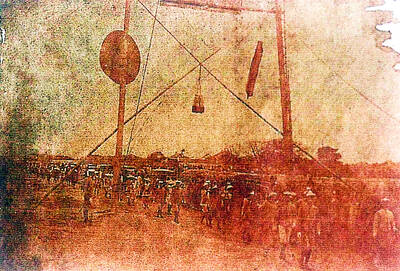
June 23 to June 29 After capturing the walled city of Hsinchu on June 22, 1895, the Japanese hoped to quickly push south and seize control of Taiwan’s entire west coast — but their advance was stalled for more than a month. Not only did local Hakka fighters continue to cause them headaches, resistance forces even attempted to retake the city three times. “We had planned to occupy Anping (Tainan) and Takao (Kaohsiung) as soon as possible, but ever since we took Hsinchu, nearby bandits proclaiming to be ‘righteous people’ (義民) have been destroying train tracks and electrical cables, and gathering in villages
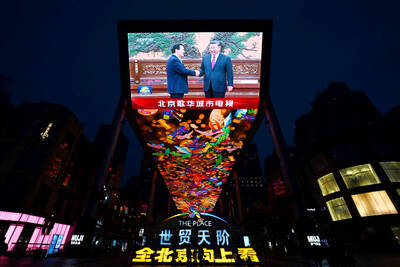
Dr. Y. Tony Yang, Associate Dean of Health Policy and Population Science at George Washington University, argued last week in a piece for the Taipei Times about former president Ma Ying-jeou (馬英九) leading a student delegation to the People’s Republic of China (PRC) that, “The real question is not whether Ma’s visit helps or hurts Taiwan — it is why Taiwan lacks a sophisticated, multi-track approach to one of the most complex geopolitical relationships in the world” (“Ma’s Visit, DPP’s Blind Spot,” June 18, page 8). Yang contends that the Democratic Progressive Party (DPP) has a blind spot: “By treating any
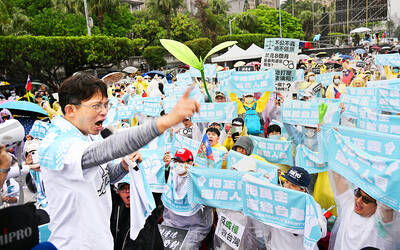
This year will go down in the history books. Taiwan faces enormous turmoil and uncertainty in the coming months. Which political parties are in a good position to handle big changes? All of the main parties are beset with challenges. Taking stock, this column examined the Taiwan People’s Party (TPP) (“Huang Kuo-chang’s choking the life out of the TPP,” May 28, page 12), the Democratic Progressive Party (DPP) (“Challenges amid choppy waters for the DPP,” June 14, page 12) and the Chinese Nationalist Party (KMT) (“KMT struggles to seize opportunities as ‘interesting times’ loom,” June 20, page 11). Times like these can
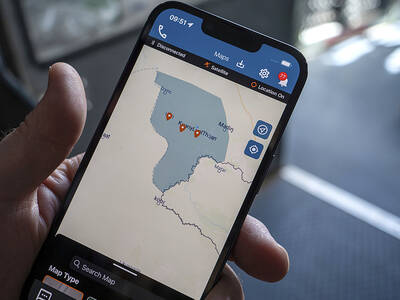
Swooping low over the banks of a Nile River tributary, an aid flight run by retired American military officers released a stream of food-stuffed sacks over a town emptied by fighting in South Sudan, a country wracked by conflict. Last week’s air drop was the latest in a controversial development — private contracting firms led by former US intelligence officers and military veterans delivering aid to some of the world’s deadliest conflict zones, in operations organized with governments that are combatants in the conflicts. The moves are roiling the global aid community, which warns of a more militarized, politicized and profit-seeking trend